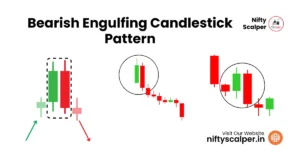Candlestick patterns are crucial tools in technical analysis, providing traders with insights into market trends and potential price movements. One powerful pattern is the Marubozu, known for its clear indication of market sentiment. In this blog, we’ll explore the Marubozu candlestick pattern in detail, covering its definition, identification, significance, types, trading strategies, advantages, disadvantages, and limitations. Let’s dive in.
Table of Content
What is a Marubozu?
A Marubozu is a candlestick pattern that lacks shadows, meaning the open and close prices are also the high and low prices for the period. This pattern indicates strong bullish or bearish sentiment and is a clear sign of market momentum. Marubozu candles can appear in both uptrends and downtrends, signaling continuation or potential reversal of the current trend.
How to Identify a Marubozu Candle
To identify a Marubozu candlestick, look for the following characteristics:
- Body: A long body with no or very minimal shadows, showing that the opening and closing prices are also the high and low prices of the period.
- Bullish Marubozu: The open price is the low, and the close price is the high, indicating strong buying pressure.
- Bearish Marubozu: The open price is the high, and the close price is the low, indicating strong selling pressure.
Significance of the Marubozu in Stock Market:
- The Marubozu candlestick pattern is significant because it reflects strong market sentiment and momentum. A bullish Marubozu indicates that buyers controlled the price action throughout the period, while a bearish Marubozu shows that sellers dominated. This clear direction can signal the continuation of the current trend or a potential reversal, depending on the context in which it appears.
Types of Marubozu Candles in Stock Market :
There are two main types of Marubozu candlesticks:
- Bullish Marubozu: This type has no upper or lower shadows, with the open price at the low and the close price at the high. It signals strong buying pressure and is often found in uptrends.
- Bearish Marubozu: This type also has no upper or lower shadows, with the open price at the high and the close price at the low. It indicates strong selling pressure and is typically seen in downtrends.
How to Trade the Marubozu Candlestick in Stock Market :
When trading the Marubozu pattern, consider these strategies:
- Trend Confirmation: Use the Marubozu to confirm the strength of an ongoing trend. A bullish Marubozu in an uptrend signals continuation, while a bearish Marubozu in a downtrend confirms selling pressure.
- Reversal Signals: In some cases, a Marubozu can signal a potential reversal. For instance, a bearish Marubozu after a prolonged uptrend may indicate a shift in market sentiment.
- Volume Analysis: Higher trading volume on the Marubozu day adds weight to the pattern, increasing the likelihood of a sustained move in the indicated direction.
- Risk Management: Use stop-loss orders appropriately to manage risk. Place stops below the bullish Marubozu or above the bearish Marubozu to protect against false signals.
Advantages & Disadvantages
Advantages:
- Clear Signal: Provides a clear indication of market sentiment and momentum.
- Simplicity: Easy to identify on candlestick charts.
- Trend Confirmation: Can confirm the strength of ongoing trends.
Disadvantages:
- Lack of Flexibility: May not always provide context for smaller price movements.
- False Signals: Can give false signals in volatile or low-volume markets.
Limitations and Risks :
While the Marubozu is a powerful pattern, it has limitations:
- Context Needed: Its significance depends heavily on the broader market context and preceding price action.
- Market Conditions: In volatile markets, Marubozu patterns may appear frequently, reducing their reliability.
- Over-Reliance: Relying solely on Marubozu patterns without considering other indicators can result in poor trading decisions.
Conclusion:
The Marubozu candlestick pattern is a vital tool for traders, offering clear insights into market sentiment and momentum. By understanding how to identify and interpret Marubozu candles, and considering their advantages and limitations, traders can enhance their technical analysis and make more informed trading decisions. Remember, while Marubozu patterns are informative, they should be used in conjunction with other analysis tools to mitigate risks and improve accuracy.
By leveraging the insights provided by Marubozu candlesticks, traders can better navigate the complexities of the financial markets and improve their trading outcomes.
Remember, successful trading is not just about mastering Marubozu Candlestick Pattern; it’s about combining them with Risk Management, Discipline, and Continuous Learning to get the best results in the stock market.




